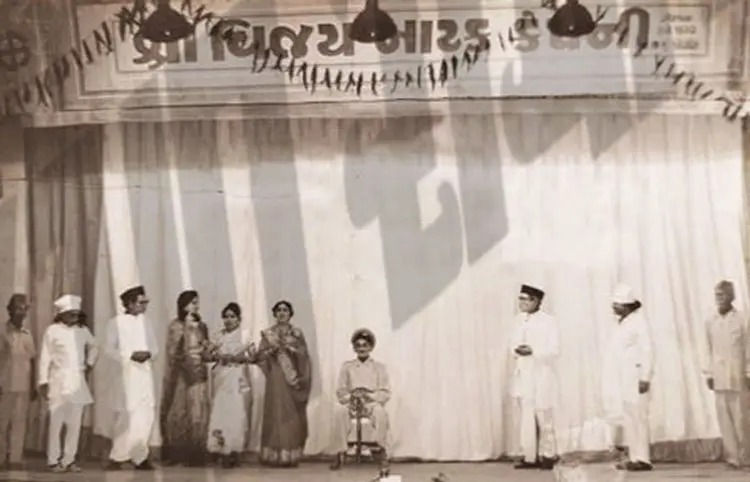'Shravan' in 1970s Ahmedabad: When double-role Gujarati plays lit up night-long jagrans

In the 1970s, as monsoon rains swept across Ahmedabad during the Hindu month of Shravan, the city’s nights came alive—not with WhatsApp statuses or social media videos, but with open-air theatre. These weren’t casual performances. Staged as part of traditional jagarans—night-long devotional vigils—they featured full-length Gujarati plays, often running past midnight.
“In those days, families would gather in the hundreds,” said Rameshbhai Panchotiya, a researcher of old Gujarati theatre. “Especially women would attend jagarans to see these plays. It was a different kind of togetherness.”
A stage for double-role spectacles
Among the many creative experiments of the time, what truly captivated audiences were double-role performances. While common in cinema, portraying two characters live on stage—with all the challenges of timing, dialogue delivery, and costume changes—required precision and training.
“Some productions went as far as casting lookalike actors to pull it off,” Panchotiya said.
One such standout production was Rupkumari, based on Shakespeare’s The Comedy of Errors. This play featured double roles not just for the lead pair but also for their companions. The live version preceded the popular Hindi film Angoor—itself based on the same Shakespearean plot.
To pull off Rupkumari, director Khodidas Nayak of Lakhvad (Mehsana) worked with actor Narendrabhai Nayak to play the master’s role. For the servant’s double, actors Dhirendra Meera and Bapulal Nayak were cast. The production team trained all actors for weeks so they could mirror each other’s body language, timing, and dialogue delivery. The play went on to win the Best Play Award in 1980.
Setting the stage: tents, permits and public buzz
Special arrangements were made to accommodate these Shravan plays. The district collector issued permits that allowed theatre groups to perform late into the night. In neighbourhoods like Kot, Maninagar, Bapunagar, Wadaj, and Saraspur, troupes such as Vijay Natak Company set up tents and makeshift stages on open grounds.
Advertising for the shows began days in advance, with posters creating a sense of anticipation across the city. People looked forward to the performances as a highlight of the Shravan season.
A shared space for art and devotion
Seating arrangements typically included chairs for some and floor seating for others, often laid out in a way that allowed everyone a view of the stage. Citizens from all walks of life—including political leaders, local dignitaries, and prominent families—would sit alongside the general public. The atmosphere was informal, devotional, and deeply communal.
As Panchotiya observed, “Today, staying awake all night is easier because of mobile phones and social media. But fifty years ago, people stayed up for something else—something shared.”
These late-night performances during Shravan offered more than just entertainment. They blended art, faith, and community participation, turning jagarans into cultural gatherings under the monsoon sky. For many in Ahmedabad, the memory of those double-role dramas remains inseparable from the rhythm and spirit of the season.

